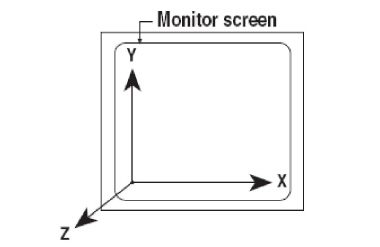2.2Global Coordinate System
Joint definitions, assignments, and results (such as coordinates, fixities, inclined supports, reactions, displacements, rotations, etc.) are based on the global coordinate system. spFrame uses the right-hand rule convention to define the global coordinate system. Looking at the display monitor, the origin of the global coordinate system is located in the bottom left corner of the screen. The positive X axis points to the right, the positive Y axis points upward towards the top of the monitor, and the positive Z axis points out of the screen. Thus, the XY plane is defined as being the plane of the display monitor.

Figure 2.1 Global Coordinate System
The right-hand rule states that if the thumb, index finger, and middle finger of your right hand are all positioned at right angles to each other, they form the X, Y, and Z axes, respectively. It is evident that this system can be rotated in any direction, and the XY plane does not necessarily lie in the plane of the monitor. However, the direction of the axes relative to each other must always remain the same.
For moments and rotations, if the thumb of your right hand points in the positive direction of an axis, curling the rest of your right-hand fingers defines the positive moment or rotation about that axis.